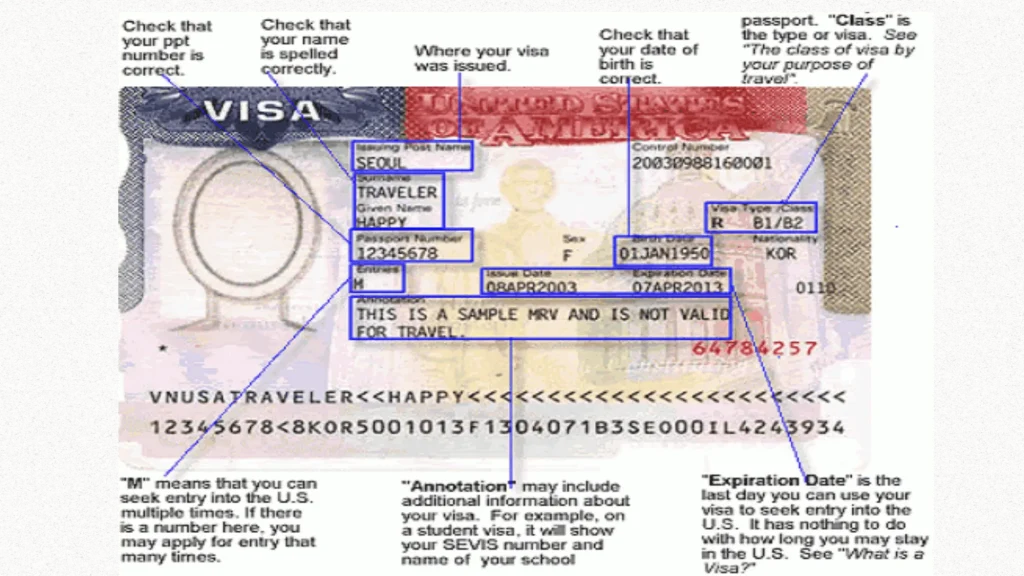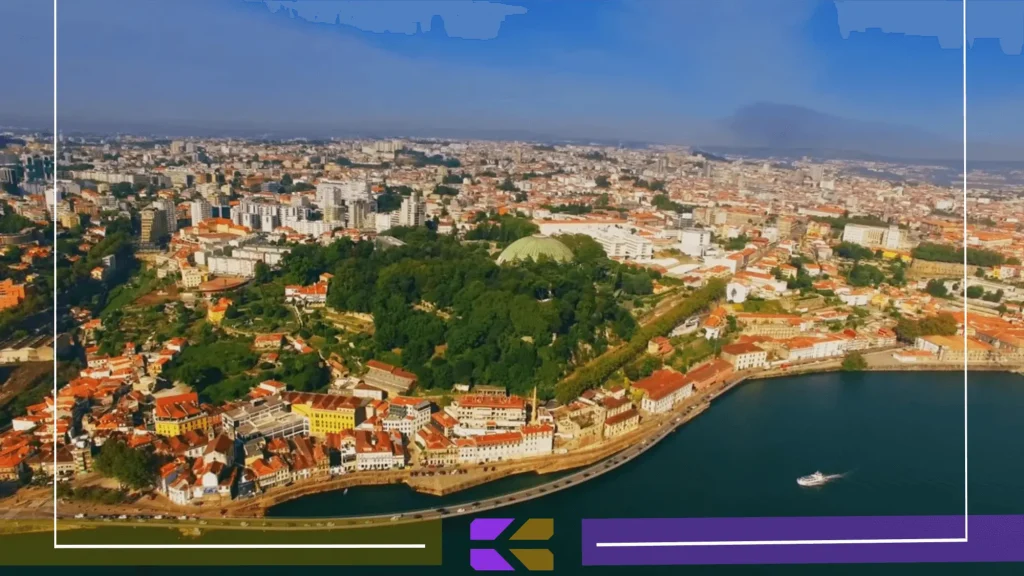Travel Visa: Your Essential Guide to International Exploration.
Traveling to distant lands and experiencing diverse cultures is a dream shared by many. Yet, when it comes to crossing international borders, a crucial document known as a visa often plays a central role in determining your access and stay in a foreign country.
In this comprehensive guide, we’ll unravel the intricacies of travel visas, from their definition and purpose to the countries that allow visa-free entry and the steps to obtain one. So, fasten your seatbelts as we embark on a journey through the world of travel visas.

Understanding the Essence of a Travel Visa
What is a Visa?
A visa is an official endorsement or permission issued by a country’s government, allowing a foreign traveler to enter, stay, or transit through their territory for a specified duration and purpose. It’s a pivotal document that outlines the terms and conditions of your visit, including the length of your stay, activities you’re allowed to engage in, and more.

History and Purpose of Travel Visas
The concept of travel visas dates back centuries when ancient civilizations established documents to regulate the movement of foreigners within their territories. Fast forward to the modern era, and visas play a critical role in international travel, ensuring security, controlling immigration, and fostering diplomatic relations between countries.
The primary purpose of a travel visa is to regulate and control the movement of people across borders. It helps authorities manage security, immigration, and public health concerns, ensuring that travelers meet specific criteria before entering a country. Visas also contribute to diplomatic relationships between nations and facilitate international cooperation.
| Time Period | Key Developments | Pros | Cons |
|---|---|---|---|
| Ancient Civilizations | – Use of “tesserae” by the Roman Empire for identification. | – Facilitated identification and movement. | – Limited to specific regions. |
| Medieval Period | – Introduction of “safe-conducts” for safer travel. | – Enhanced security during travel. | – Restricted to certain territories. |
| 19th Century | – Ottoman Empire’s “tezkereh” travel permits. | – Controlled foreign access for governance. | – Limited international recognition. |
| League of Nations | – “League of Nations’ Passport” for officials. | – Standardized travel documentation. | – Limited to League of Nations officials. |
| Post-World War II | – Recognition of the right to leave any country. | – Upheld individual’s right to travel. | – National security concerns remained. |
| Modern Visa Systems | – Introduction of diverse visa types (tourist, business, etc.). | – Regulates entry, contributing to security. | – Visa processes can be complex and time-consuming. |
Travel Visas-Free Countries
Some fortunate travelers enjoy the privilege of visa-free entry to certain countries, which means they can visit without obtaining a visa beforehand. The conditions for visa-free travel vary widely; they might be based on citizenship, the purpose of the visit, or reciprocal agreements between nations. Popular destinations offering visa-free entry include Maldives, Thailand, Mexico, and some of listed here:
- Albania: Offers unrestricted entry to European Union (EU) citizens and other nations for stays lasting up to 1 year.
- Bahamas: Facilitates visa-free access to citizens from various countries, including the United States and Canada, for stays up to 3 months.
- Costa Rica: Permits visa-free stays of up to 90 days for citizens from multiple countries, including EU member states and the United States.
- Japan: Extends visa-free privileges to around 70 countries, including the United States and numerous EU nations, for brief visits.
- Malaysia: Provides visa-free entry to travelers from diverse nations like the United States, Canada, and the UK, allowing stays of up to 90 days.
- Panama: Offers visa-free entry for up to 180 days to citizens of multiple countries, including EU member states and the United States.
- Singapore: Enables citizens of numerous countries, including the United States and EU member states, to stay visa-free for up to 90 days.
- South Korea: Extends visa-free access to citizens of approximately 110 countries, including the United States and EU countries, for specified durations.
- Turkey: Grants visa-free entry for up to 90 days within a 180-day period to numerous nationalities, including citizens of the United States and the UK.
- United Arab Emirates (UAE): Allows short stays without a visa for nationals of various countries, including the United States and EU member states.
These visa-free arrangements foster international travel, facilitate business interactions, and encourage cultural exchanges among nations.
Obtaining a Travel Visa and Types
How to Get a Visa?
Obtaining a travel visa involves a structured application process that varies from country to country. The steps usually include filling out an application form, providing necessary documentation, and paying the required fees. The type of visa you need depends on your purpose of travel, such as tourism, business, study, or work.
16 Steps to Get Your Travel Visa:
- Choose Your Destination:
Select the country you plan to visit and research its visa requirements. - Visa Types:
Understand the different types of visas available (e.g., tourist, business, student) and which one you need. - Check Eligibility:
Make sure you meet the visa category’s eligibility criteria. - Required Documents:
Gather necessary documents, including a valid passport, application form, photos, and proof of funds. - Application Submission:
Submit your visa application to the embassy/consulate or apply online. - Pay Fees:
Pay the required visa fees, which vary depending on the visa type and country. - Attend Interviews (if applicable):
Some countries may require an in-person interview at the embassy/consulate. - Proof of Accommodation:
Provide details of where you will stay during your visit. - Travel Itinerary:
Submit your travel itinerary, including flight bookings and planned activities. - Financial Means:
Provide proof that you have enough funds to cover your expenses during the trip. - Visa Processing:
Your application will be processed by the embassy/consulate once it has been received (processing times vary). - Receive Visa:
Once approved, you’ll receive your visa either digitally or stamped in your passport. - Travel Preparation:
Plan your trip, pack your bags, and make any necessary arrangements. - Entry and Exit Dates:
Keep track of the allowed duration of stay in the destination country. - Respect Visa Conditions:
Abide by the rules and conditions of your visa during your stay. - Extension (if needed):
If you wish to stay longer, inquire about extension options before your visa expires.
Different Types of Visas
Countries offer various types of visas to cater to different travel purposes. Each type comes with specific requirements and conditions, so it’s crucial to choose the one that aligns with your travel intentions.
Tourist Visa
Tourist visas cater to leisure travelers seeking recreational exploration. These short-term visas are typically valid for up to three months and prohibit work activities. Multiple applications can be submitted for the same country, as long as the embassy approves.
Transit Visa
Transit visas allow passage through a specific country en route to another destination. They’re crucial for layovers or connecting flights in a transit country. Transit visas must be obtained before travel, as they aren’t issued at airports.
Medical Visa
For medical treatment abroad, medical visas are essential. They cover the treatment period and recovery duration. Approval requires medical evidence and hospital details in the destination country.
Working Holiday Visa
Offering a blend of work and leisure, these short-term permits enable you to explore while earning to sustain your journey. Restrictions on work type and hours usually apply, and eligibility is often based on age (18-30).
Student Visa
Student visas facilitate international education, valid for the duration of your study program. You’re generally not allowed to work unless permitted by the host country.
Work Visa
If employment beckons abroad, a work visa is necessary. Issued for extended periods, these visas are tied to work contracts and can pave the way for permanent residency.
Family Reunification Visa
For spouses working abroad, family reunification visas permit temporary or permanent residency. Minor children are also eligible.
Investment Visa
Residency is attainable through significant financial investment, often in startups, bonds, or real estate. Positive economic impact and job creation are key goals.
Official Visa
These visas allow diplomatic work abroad, with options like diplomatic, service, or courtesy visas, catering to representatives of your home country.
Refuge or Asylum Visa
Refuge or asylum visas offer sanctuary to those persecuted due to religious, racial, or political reasons in their home country.
Digital Nomad Visa
Digital nomad visas cater to remote workers, permitting them to work while residing temporarily in a host country.
Retirement Visa
Intended for retirees seeking to settle abroad, retirement visas require proof of sufficient funds to support your retirement years.
Pilgrimage Visa
Pilgrimage visas are designed for religious journeys, like the Hajj visa issued by Saudi Arabia for Muslims embarking on the sacred Hajj pilgrimage.
Visa Application Process
Visa Application at an Embassy
One traditional method is applying for a visa at the embassy or consulate of the country you plan to visit. This process involves submitting your application form, supporting documents, and attending an interview if required.
Online Visa Application
In the digital age, many countries offer online visa applications. This convenient method allows you to submit your application, upload documents, and pay fees from the comfort of your home.
Visa on Arrival
Some countries permit travelers to obtain a visa upon arrival. This option is available at designated entry points, such as airports or border crossings. However, it’s crucial to check beforehand if your destination offers this facility.
Reasons for Visa Denial
While most visa applications are successful, there are instances when they’re denied. Common reasons include incomplete documentation, insufficient funds, failure to meet eligibility criteria, and concerns about the applicant’s intent to return to their home country.
Visa Duration and Validity
Visa duration and validity vary widely. Some visas are single-entry, allowing a one-time visit, while others are multiple-entry, permitting several visits within a specified timeframe. The validity period ranges from a few days to several years.
Passport vs Visa
A passport is a travel document issued by your home country that serves as proof of identity and citizenship. A visa, on the other hand, is an endorsement allowing entry into a specific foreign country.
Visa vs Residence Permit
While a visa is a temporary authorization for short visits, a residence permit grants you the right to reside in a foreign country for an extended period. Residence permits are typically pursued for work, study, or family reunification.
Electronic Travel Authorizations
Electronic Travel Authorizations (eTAs) are digital permits that allow visa-exempt travelers to enter certain countries. They’re linked to your passport and are often required for short visits.
Joint Visa Schemes
Joint visa schemes involve groups of countries collaborating to issue a single visa. This approach simplifies travel within the member countries, promoting tourism and enhancing economic ties.
Exit Visas
An exit visa, albeit less common, is a document that permits you to leave a country. Some nations require exit visas to ensure that certain obligations are met before departure.





